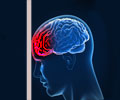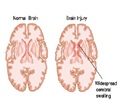World Head Injury Awareness Day is celebrated on 20th March every year. It aims to generate awareness among the general public about the dangers of head injury and ways to prevent it. The theme for 2018-2020 is ‘Change Your Mind.’
- World Head Injury Awareness Day is celebrated on 20th March every year
- Aims to generate awareness about the dangers of head injuries among the general public
- It highlights the importance of preventive strategies to tackle the problem globally
- The theme for 2018-2020 is “Change Your Mind”
Read More..
Objectives of World Head Injury Awareness Day
The main objective of World Head Injury Awareness Day is to generate awareness about traumatic head injuries and highlight the magnitude of the problem among various stakeholders as well as the general public. It also aims at laying stress on the remedial measures that can be taken to prevent the occurrence of head injuries. These especially include situations where accidents can be averted such as participating in sports, working at construction sites, driving heavy vehicles, partaking in violent activities, and operating heavy machinery, among others.Types of Head Injury
There are three types of head injury:- Concussion: This is the most common type of head injury, where the brain is shaken due to the force of impact, but there is no bleeding or visible signs of damage to the brain tissue
- Contusion: This type of head injury is more severe than a concussion. Here, the brain is bruised due to the impact and becomes swollen. The swelling can exert pressure on the brain due to the limited size of the skull cavity, which can result in poor blood supply to the brain, thereby causing permanent brain damage and even death
- Skull Fracture: This is the severest type of head injury. In this case, bone fragments can become lodged in the brain and cause direct damage. Moreover, the open wound can cause infection of the brain itself (encephalitis) or its membranous covering (meningitis), both of which are life-threatening and therefore considered as medical emergencies
Head Injury: Facts & Figures
Among head injuries, traumatic brain injury (TBI) is the leading cause of death, disability, socioeconomic losses, and poor quality of life among survivors. The global and Indian statistics for head injuries in general, and TBI in particular are given below:Global Statistics
- Incidence of head injury is 200 per 100,000 people annually
- Mortality rate from head injury is 20 per 100,000 people annually
- Seventy percent fatalities occur below 45 years of age
- Men are 1.5 times more likely to suffer from head injury than women
- Fifty million people suffer from TBI annually
- Approximately 1.2 million people die from TBI annually
- By 2020, there will be 80 percent increase in TBI in developing countries
Indian Statistics
- Two million people sustain brain injuries, 0.2 million die, and 1 million require rehabilitation annually
- One person dies every 6-10 minutes from TBI
- TBI is 25 times higher in developing countries than in developed countries
- Alcohol involvement is seen in 15-20 percent of TBI cases
- Sixty percent of TBI is caused by road traffic accidents (RTA)
- Fatality rate from RTA is 70 per 10,000 vehicles
- By 2020, there will be a 147 percent increase in deaths due to RTA
- Economic burden of RTA is 3 percent of GDP
- Major causes of head injury are the following:
- RTA – 60 percent
- Falls – 25 percent
- Violence – 10 percent
- Others – 5 percent
Prevention of Head Injury
Head injuries can be prevented by taking the following precautions:- Using a seatbelt while driving and installing airbags in motor vehicles
- Using a child car seat for children, secured to the back seat
- Wearing a helmet while riding two-wheelers and ensuring that the pillion rider is also wearing one
- Wearing a helmet while participating in sports such as American football, cricket, baseball, skiing, Formula One, and motorbike racing, among others
- Never drive under the influence of alcohol or psychotropic drugs
- Improving lighting and installing handrails in staircases
- Keeping living spaces clutter-free
- Displaying safety information at the workplace
- Providing proper safety equipment to workers employed in high-risk jobs
- Not allowing firearms and other weapons in the house
The Way Forward
The undermentioned strategies could be adopted to forge a way forward for tackling this global problem:- Planning: Proper plans should be in place for finding effective ways to reduce head injuries, especially those arising from road traffic accidents - the major cause of head injuries. This will require an all-around integrated effort, involving town planners, road engineers, PWD officials, traffic police, among others to formulate an effective strategy to address the problem
- Medical Aid – Importance of the 'Golden Hour': The 'Golden Hour' is the first hour of a traumatic injury that is most critical for saving the victim’s life. The average time taken for a head injury patient to reach the hospital is four hours, which means that the patient misses the ‘Golden Hour', often resulting in death or serious disability. Thus, there is a need to create awareness about the 'Golden Hour'.
- Social Support: The role of social workers is crucial for providing psychological and moral support as well as organizing rehabilitation for head injury survivors
- Political Will: Policymakers and public health administrators need to be convinced about the magnitude of the problem so that effective health policies can be formulated that integrate the issue to head injury within its ambit
- Statistical Evidence: Statistical data is required for highlighting the magnitude of the problem. So, data needs to be generated on the incidence, prevalence, mortality rates, and disability from head injuries
- Research: There is a need for descriptive, analytical, epidemiological and interventional studies, as well as operational and systems research. This will help to bring the issue on the public health agenda
- Prevention Programs: These should be affordable, cost-effective, and sustainable. Head injury prevention programs should be designed in such a way that they can be integrated into existing National Health Systems
Summary
Thus, with reference to head injuries, it is evident that strategies should be in place to assess the prevalence, find the high-risk populations, establish the causes, and determine the risk factors. This will help to identify ways to prevent the occurrence of head injuries, reduce the severity, and organize need-based rehabilitation services for the survivors.Conclusion
More awareness and sensitization programs, such as the World Head Injury Awareness Day, need to be organized with proactive participation by health professionals, along with the media and advocacy groups to increase safety consciousness among various stakeholders, including decision-makers, policymakers, vehicle manufacturers, professionals and the general public to reduce the incidence of head injuries in our society.Reference:
- Gururaj G. Epidemiology of Traumatic Brain Injuries: Indian Scenario. Neurol Res. 2002; 24(1): 24-8 - (https://www.ncbi.nlm.nih.gov/pubmed/11783750)
- World Head Injury Awareness Day - The Children’s Hospital Trust, Cape Town, South Africa - (https://www.childrenshospitaltrust.org.za/world-head-injury-awareness-day/)
- About Brain Injury - Brain Injury Association of America, USA - (https://www.biausa.org/brain-injury/about-brain-injury)
- Head Injury - Johns Hopkins Medicine, USA - (https://www.hopkinsmedicine.org/healthlibrary/conditions/nervous_system_disorders/head_injury_85,P00785)
- Traumatic Brain Injury - Indian Head Injury Foundation, New Delhi, India - (http://indianheadinjuryfoundation.org/traumatic-brain-injury/)
- Sinha VD, Chakrabarty A. Quantitative Research on Traumatic Brain Injury in India: The Travails and the New Optimism. Neurology India. 2017; 65(2): 261-2. - (http://www.neurologyindia.com/article.asp?issn=0028-3886;year=2017;volume=65;issue=2;spage=261;epage=262;aulast=Sinha)
- Traumatic Brain Injury - National Institute of Mental Health and Neurosciences (NIMHANS), Bangalore, India - (http://www.nimhans.ac.in/sites/default/files/Traumatic%20Brain
%20Injury_0.pdf)
Source-Medindia














